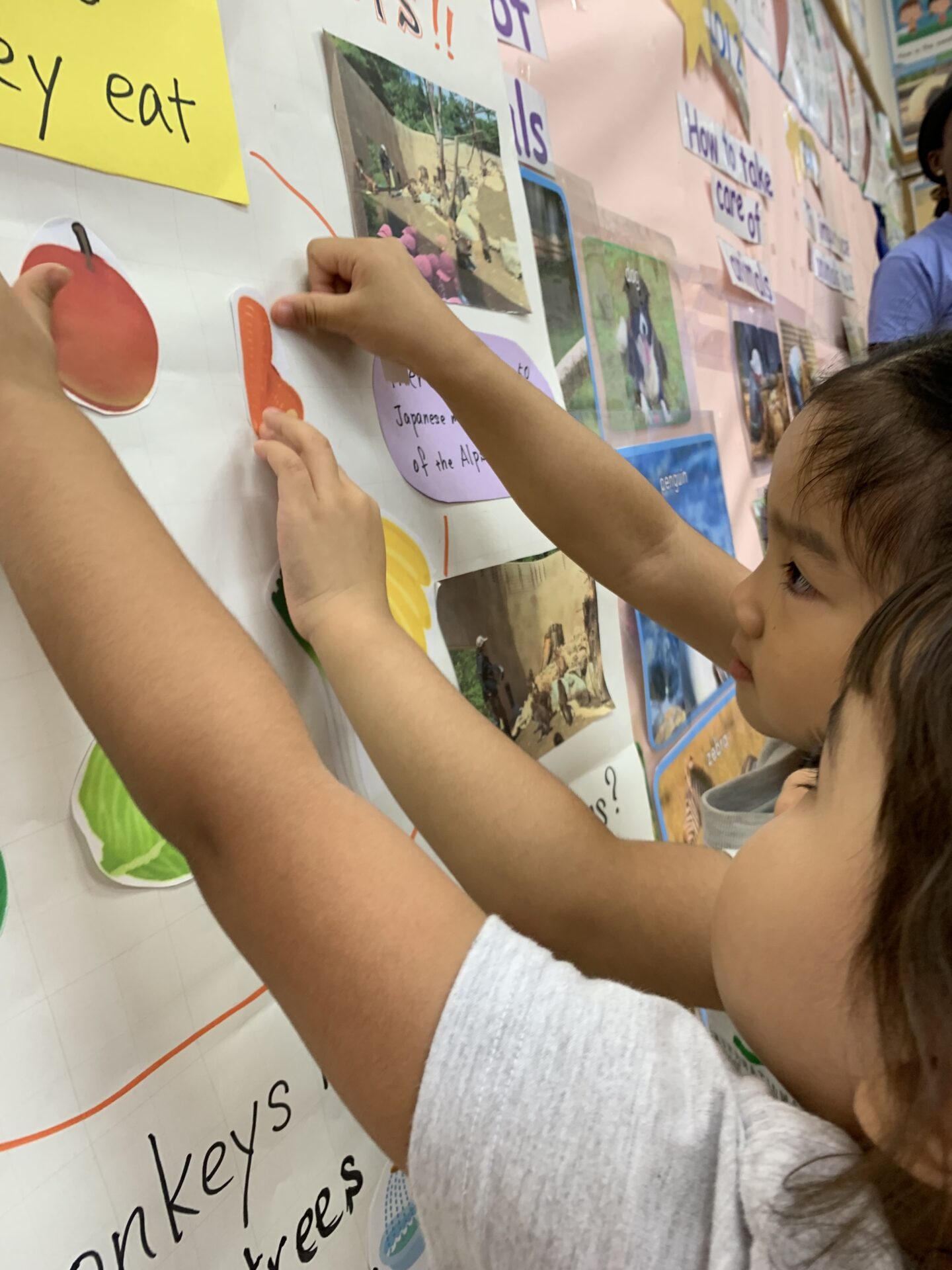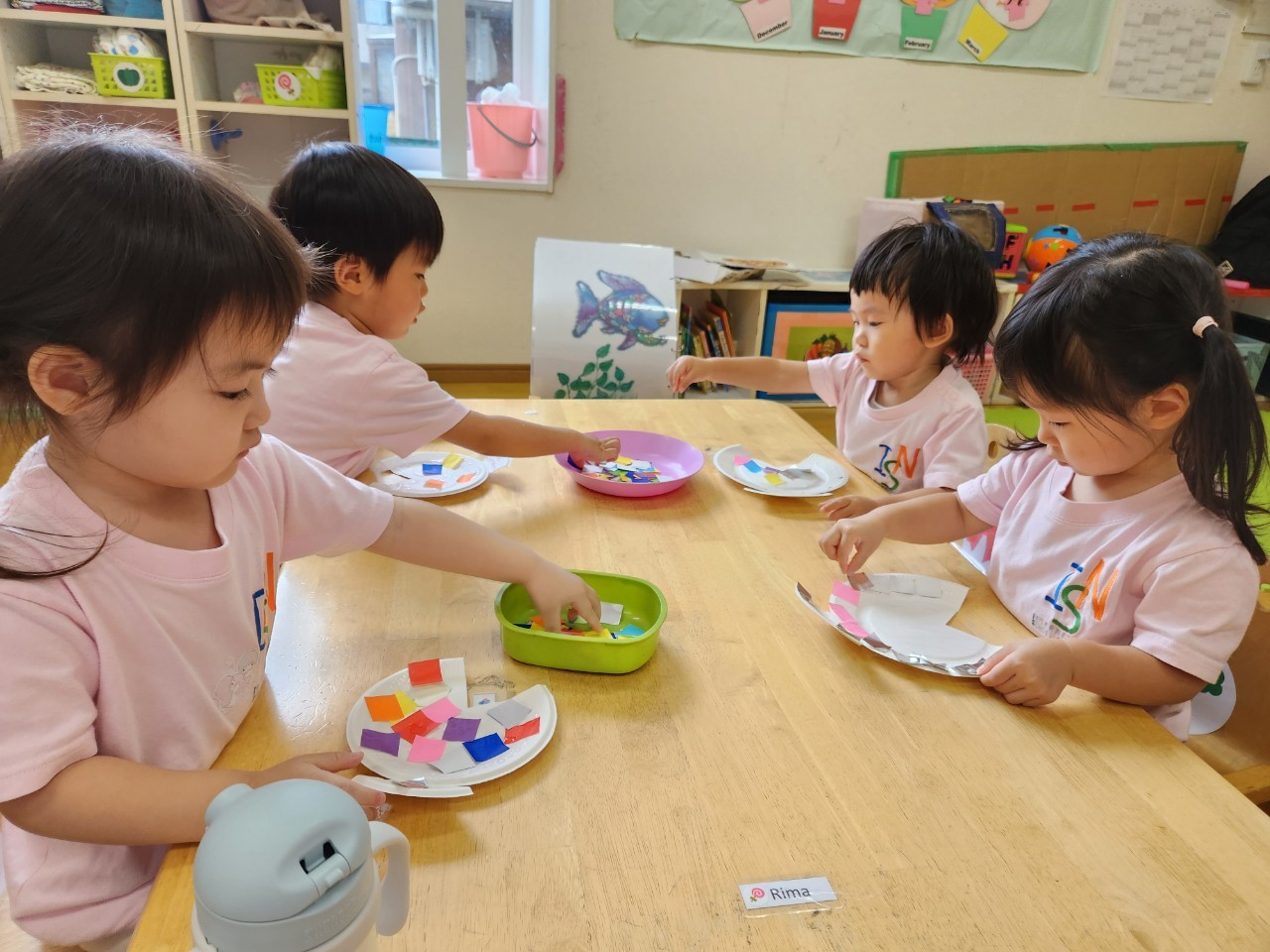“Learning is not a race for information, it’s a walk of discovery.”
” 学びとは情報の競争ではなく、発見の道のりである”
Last Friday, Milky Way started to explore the LOI1: 3R’s- Reduce, Reuse, Recycle. We began with identifying which is considered rubbish or recyclable. We put different types of materials in front of them and they checked it one by one if we can still use the materials again in other ways (recyclable) or not (rubbish for example the used tissue or dirty paper). We remembered an idea learned from last week’s guest speakers, “pura or plastic mark” which means if the material has this mark, it’s considered recyclable.
先週、ミルキーさん達はLOI1: 3R- Reduce, Reuse, Recycleの探求を始めました。まず、ゴミとリサイクル可能なものの識別から始めました。いろいろな種類のものを置いて、それが他の方法でまだ使える(リサイクルできる)か、そうでないか(例えば、鼻をかんだティッシュや汚れた紙などのゴミ)を一つずつチェックしました。先週のゲスト・スピーカーから学んだ “pula(プラスチック)マーク “を思い出し、このマークがあるものはリサイクルできるものだということを確認しました。
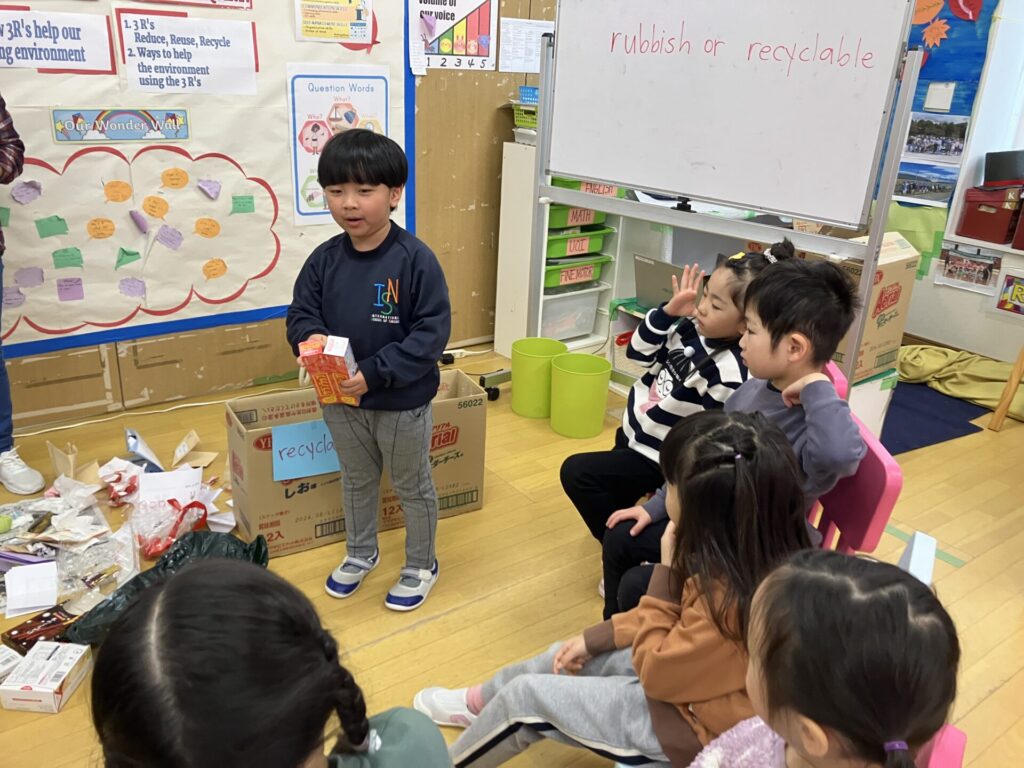
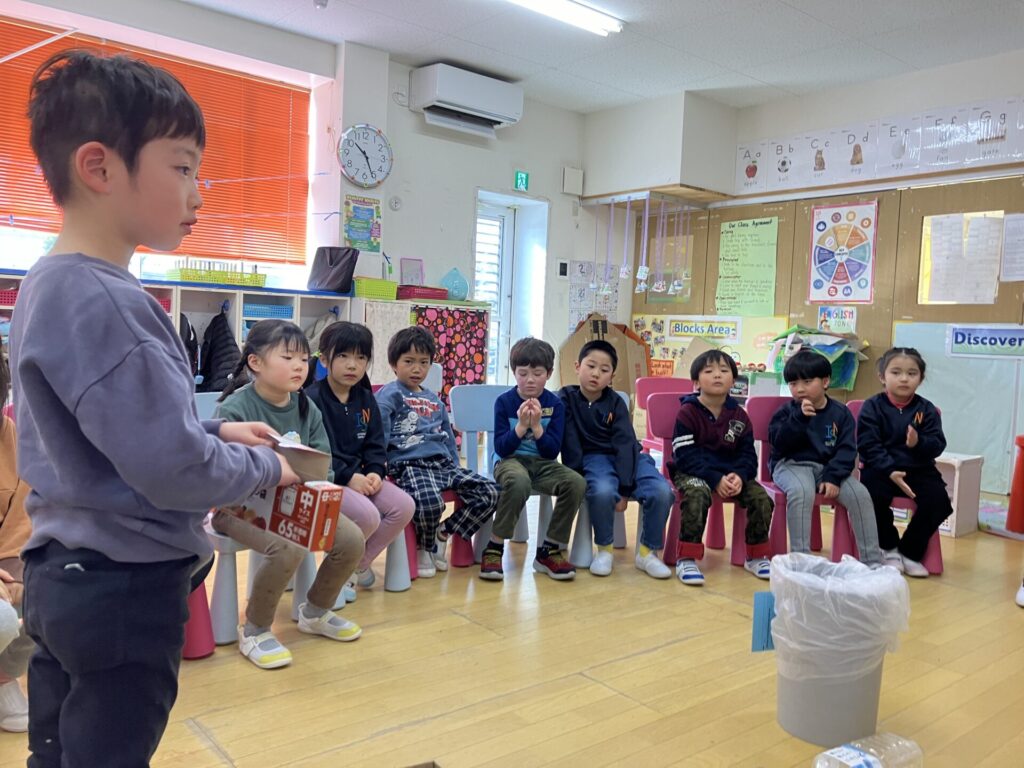
We have shown them the garbage disposal rules and guidelines in Matsumoto and they were surprised when Ms. Fronie told them that it’s Tagalog and started looking for Tagalog words. Now we have three versions of it such as Tagalog, English, and Japanese. Some of them have seen this paper at home and are familiar with it.
松本市のごみ捨てのガイドラインをクラスで見せてみました。Ms.Fronieが見せてくれたのはタガログ語バージョン!みんなびっくりしながらタガログ語の単語に興味津々でした😊クラスには、タガログ語、英語、日本語の3つのバージョンがあります。何人かは、お家でこの紙を見たことがある子もいて、親しみのある子もいました✨
To learn more about the recycling symbols in Japan, we posted various symbols on the wall of our Discovery Area and put lots of question marks and two questions such as “What am I” and “Can you find me?. When the students read it, they started checking the materials to see the signs and they found out the meaning of the four symbols such as plastic, paper, cardboard, and plastic bottles. “We couldn’t find the other symbols, we need more trash!”, one student said.
日本のリサイクルのマークについて学ぶため、ディスカバリーエリアの壁にはいろいろなマークが登場しました。たくさんのはてなマークと、「私は何?」「私を見つけられるかな?」という質問も。それを見た子ども達は、そのマークを見つけるためにいろいろな物をチェックし始め、プラスチック、紙、段ボール、ペットボトルの4つのマークの意味を知りました。「他のマークは見つけられなかった。もっとごみが必要だよ!」という声が上がりました😊
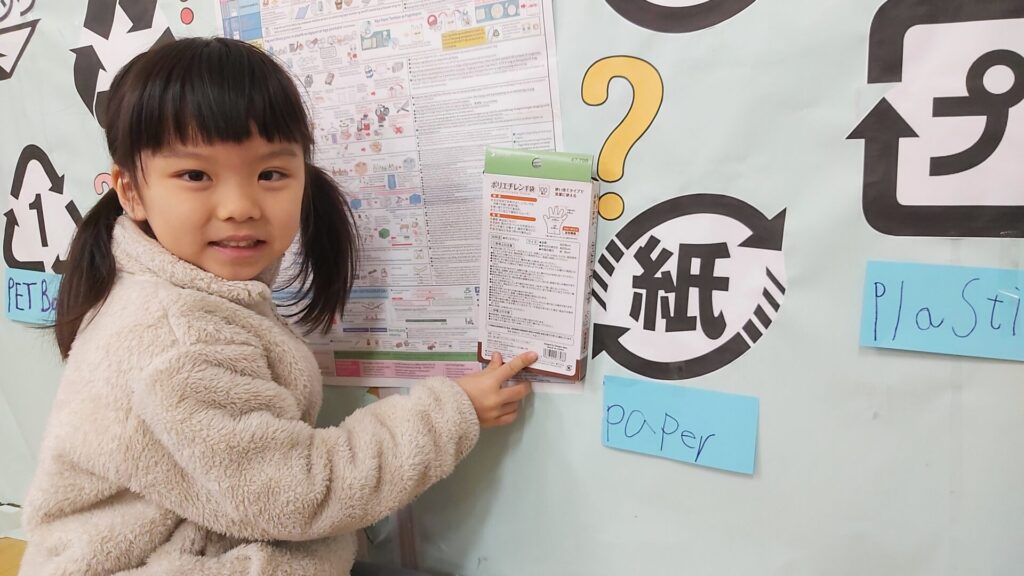
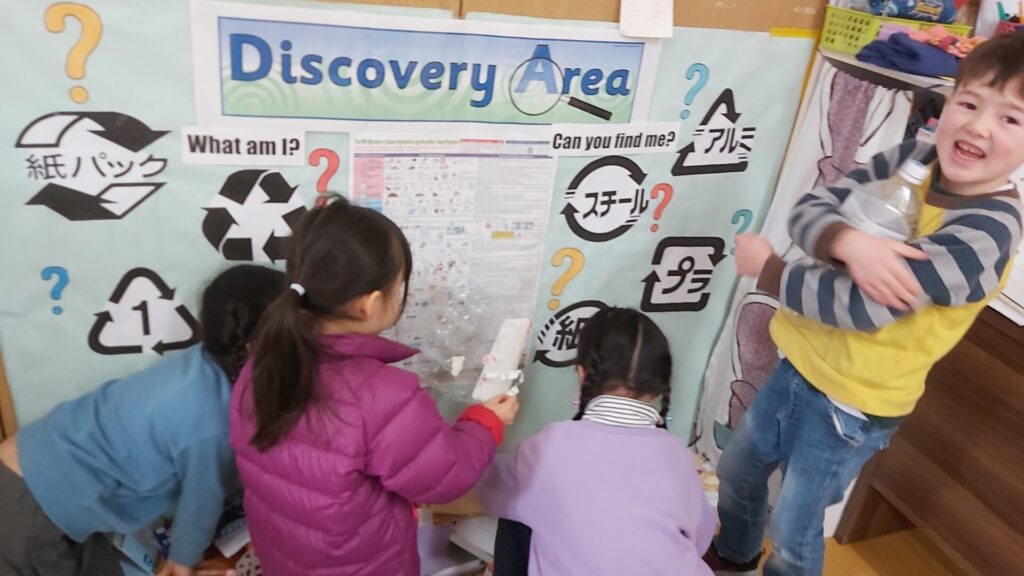
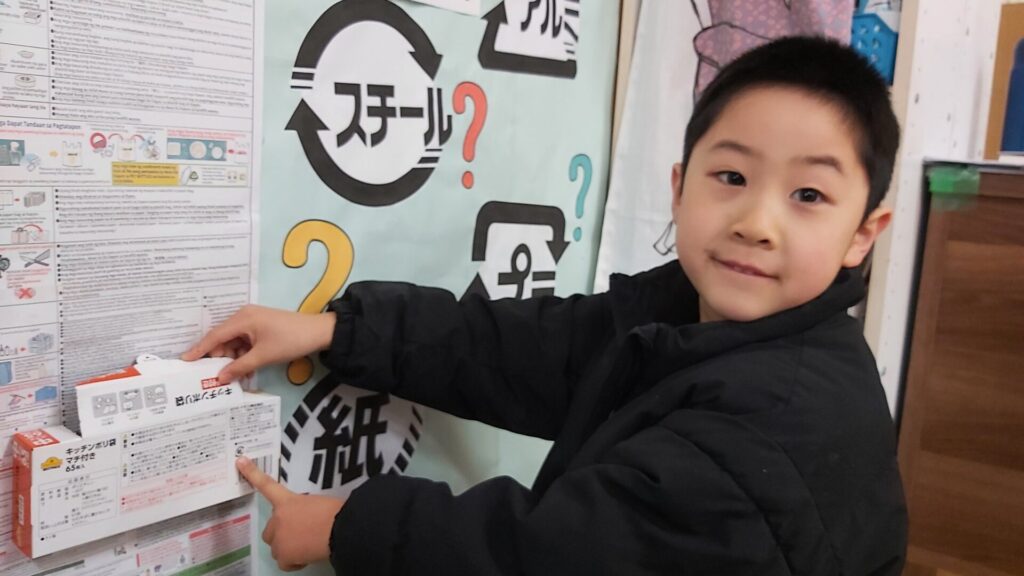
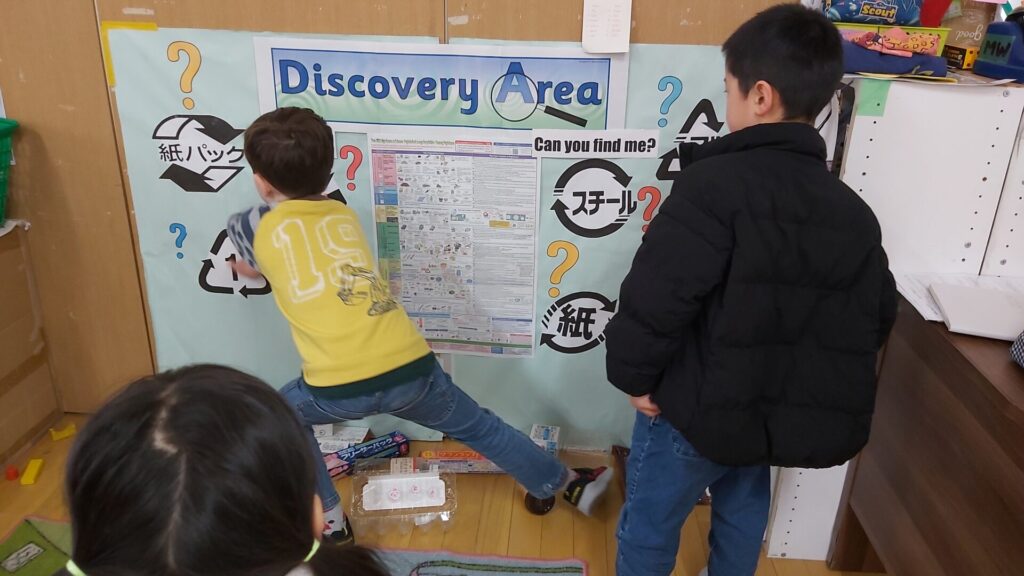
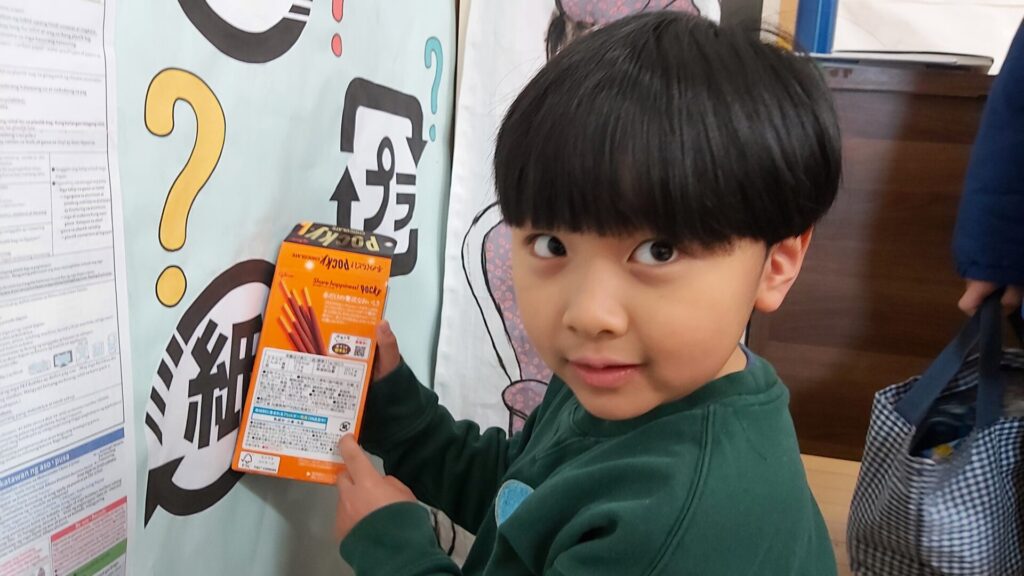
We also set up four garbage bins in the classroom following the colors in the garbage disposal guideline. Now, before they throw the trash, they check it first if it has a mark or not, and which bin color they have to throw it.
また、ごみ捨てのガイドラインの色と同じ色を使った4つのごみ箱を設置した。今は、ごみを捨てる前に、まずマークがあるかないか、そしてどの色のごみ箱に捨てるかをチェックしています😊
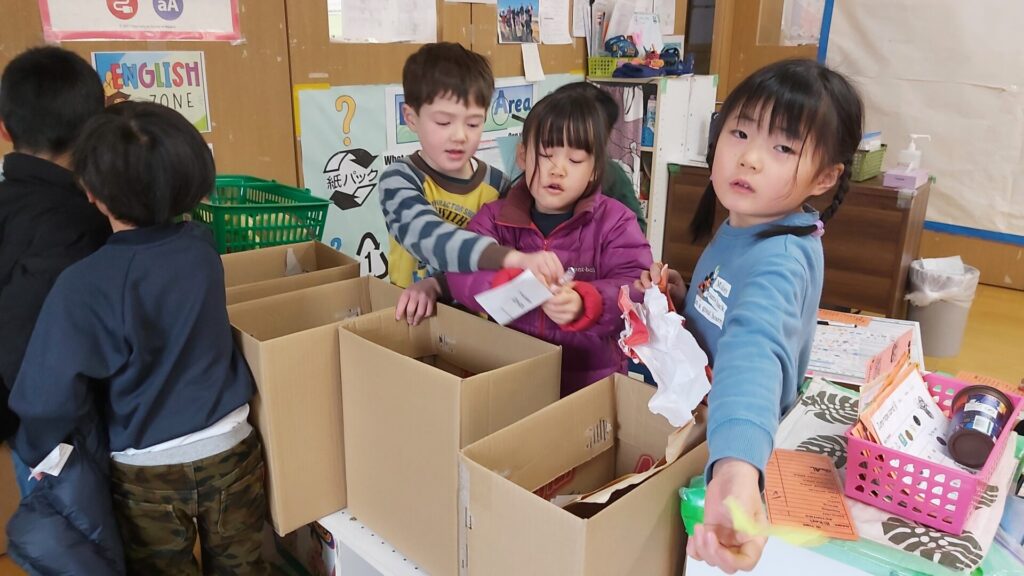
To find out the meaning of the 3R’s, we grouped them into three and worked as a team to discuss and identify which picture shows reduce, reuse and recycle. One group answered all the items correctly and some of them have ideas why it is called reduce, reuse and recycle and we came up with its meaning.
3Rの意味を知るために、3つのグループに分かれて、どの絵がリデュース、リユース、リサイクルを示しているかを話し合うアクティビティをしました。全問正解したグループもありましたが、難しかったグループも。みんなで、なぜリユース、リデュース、リサイクルと呼ばれるのかを考えて、その意味を導き出しました💡
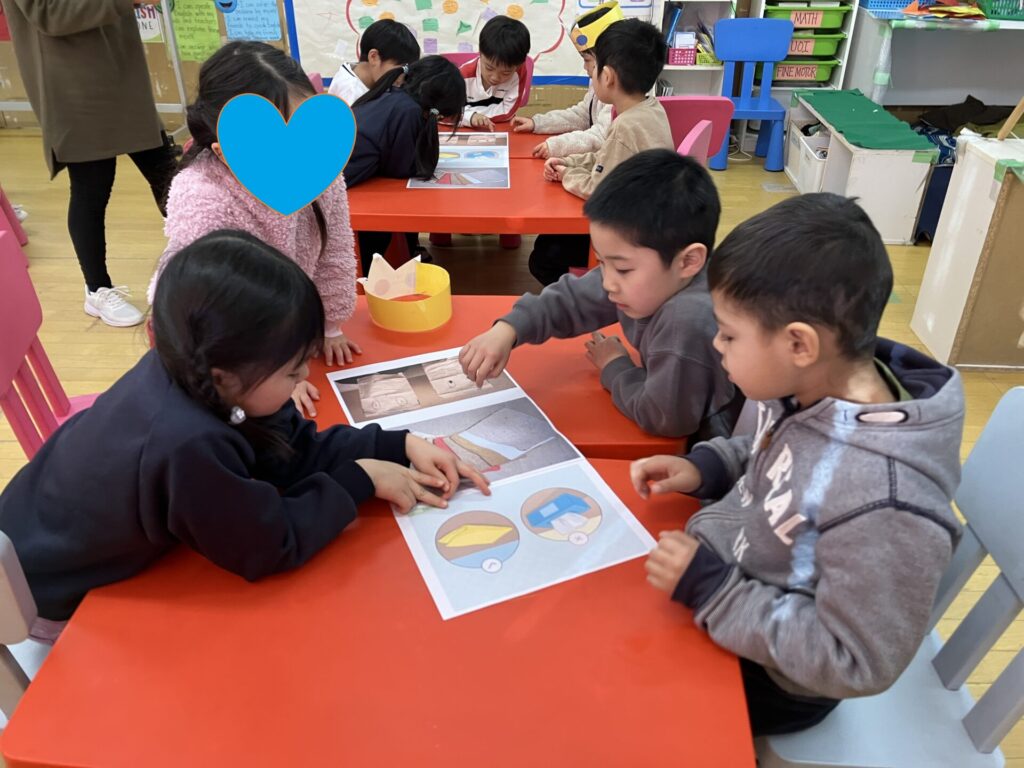
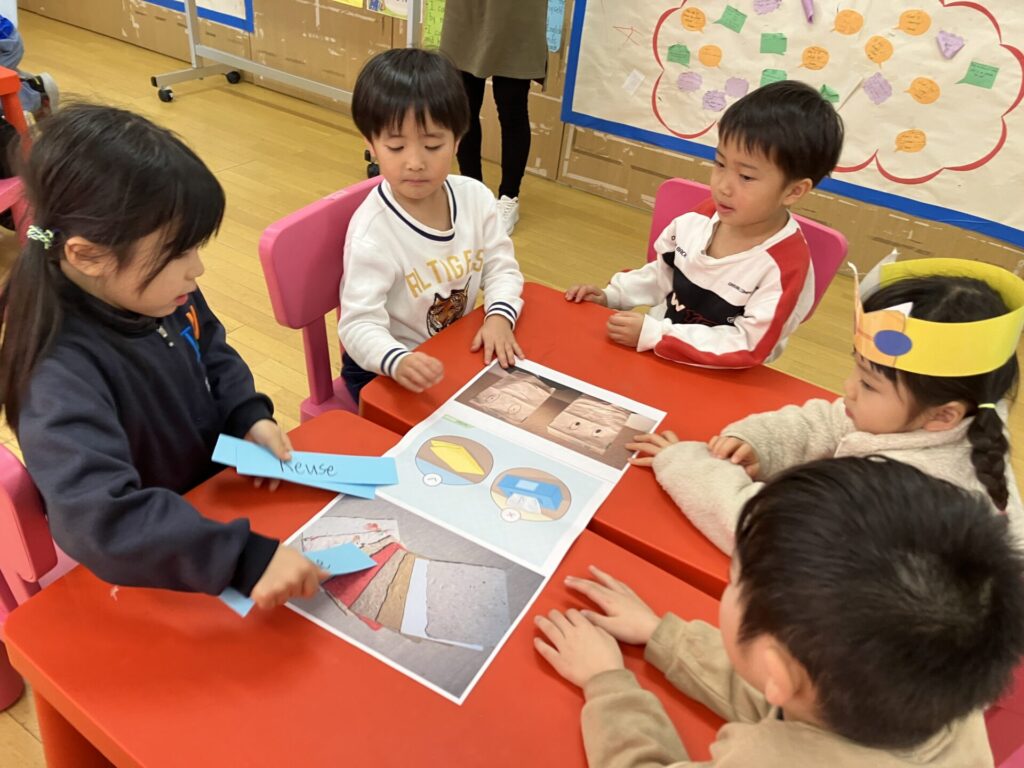

We started reading the level C RAZ book and this week we read about “airplanes”. They thought people only use airplanes to travel or go to places and they were amazed at how many ways we can use airplanes. In the morning, we have spelling words activity, this is to develop and improve their writing and spelling skills.
Readingレッスンでは、RAZ bookのLevelCを読み始め、今週は「飛行機」についての本を読みました。子ども達は、飛行機は旅行やお出かけにしか使わないと思っていたようですが、荷物を運んだり畑に肥料を撒いたり、火を消すのに役立ったり、アクロバティックな体験をするために使ったりと、いろいろな使い方があることに驚いていました。また、午前中にはスペリングのアクティビティも行いました。音を聞いて単語を書き取るものですが、これは書く力、そしてスペルを考える力にもなります。
On Monday, we got a special snack from our friend’s dad who visited their country, Uzbekistan. Everyone loved it and kept asking for more. Thank you so much for remembering Milky Way on your trip and sharing and experiencing Uzbekistan culture. We really enjoyed and appreciated it.
月曜日、ウズベキスタンを訪れたお友人のお父さんからおみやげにおやつをいただき、みんなでスナックの時間にいただきました。みんな大喜びで、もっと食べたいと何度も言っていました。Unit3でゲストスピーカーとして来てくださったときのみんなを思い出してくれ、ウズベキスタンの文化を分かち合い、体験させてくださって、本当にありがとうございました✨!
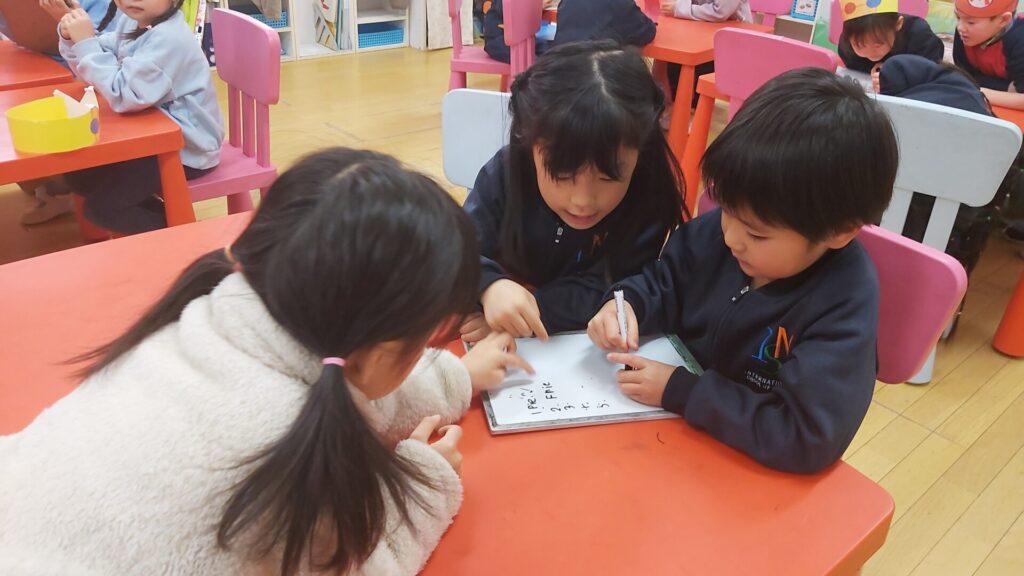

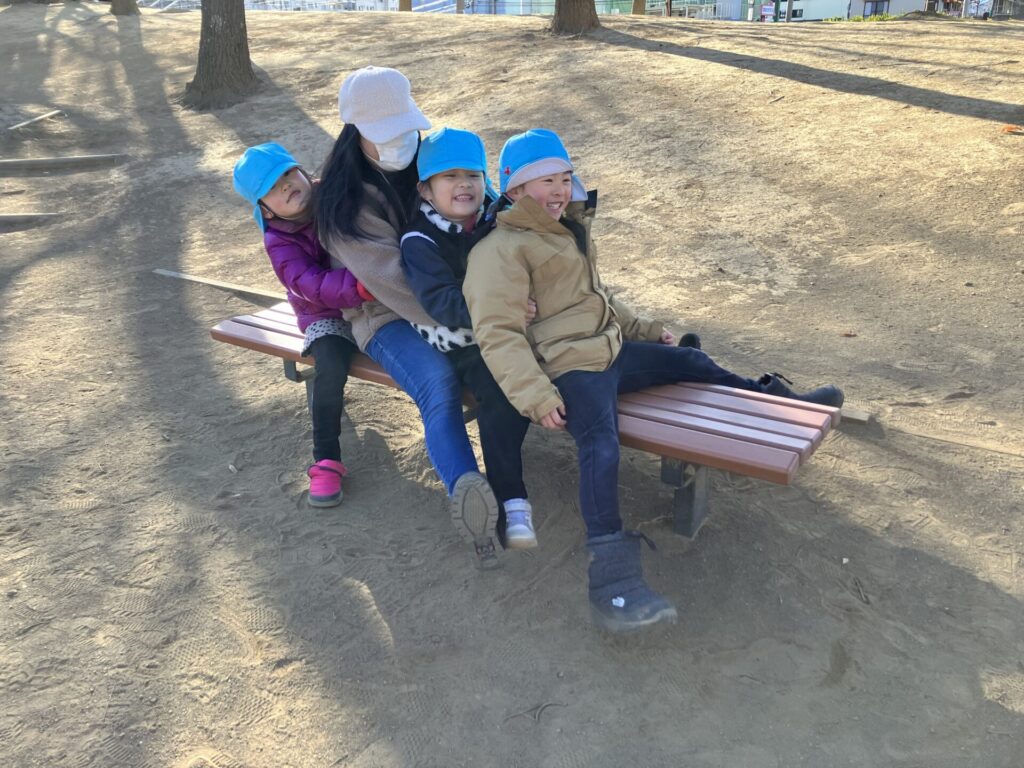
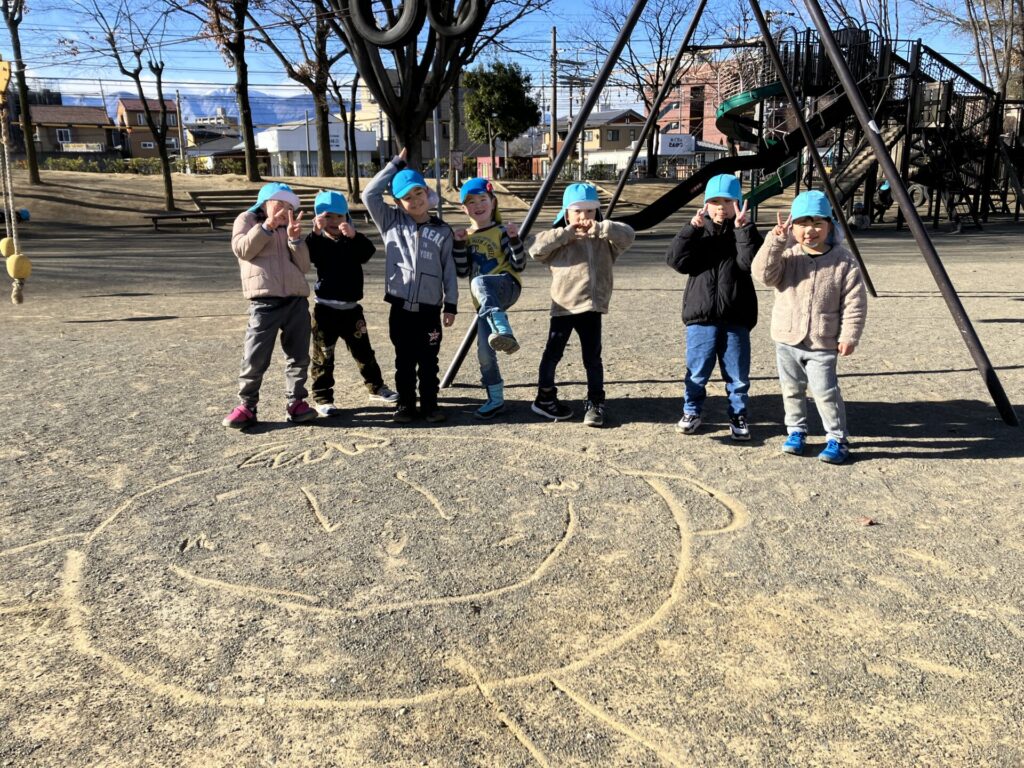
That’s all for this week! Thank you for reading our blog and have a wonderful weekend!
今週はここまで。いつもお読みいただきありがとうございます。素敵な週末をお過ごしください!



